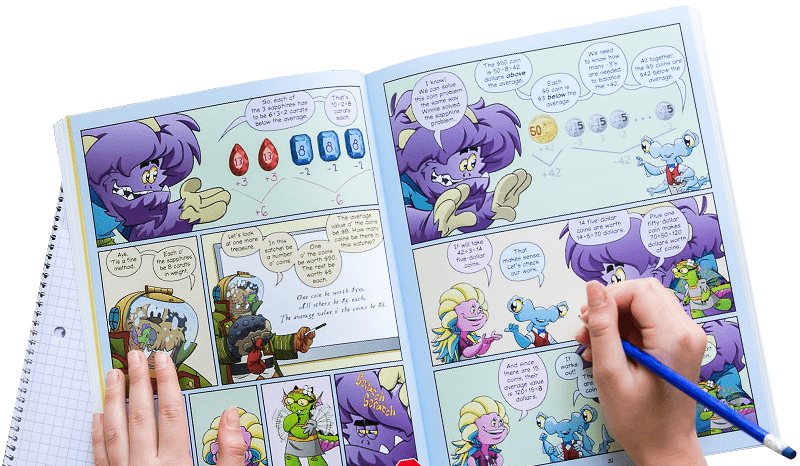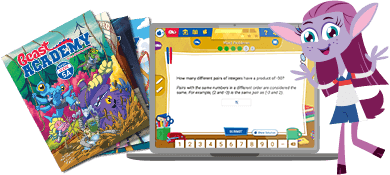High Ground
Write numbers in a twisting, branching path. Whoever writes the highest number wins.
Instructions
First draw a 5x5 grid. (See Learning Notes below for tips.) Player 1 starts the game by writing a 0 in any space in the grid. Then, using a different color, Player 2 writes a 0 in any space.


Next, starting with Player 2, take turns writing numbers in the grid. Pick any number in your color, then write the next number in a neighboring square (above, below, left, right, or diagonal).


Note that Player 1 always writes the first 0, but Player 2 always writes the first 1. After that, players take turns, picking a number, then writing the next number in a neighboring square.


You can choose your highest number to build from, or you can branch out from a lower number. For example, first Red chooses their highest number, 3, and writes a 4 in a neighboring square. In the next turn, though, Blue chooses to block Red's progress by starting a new branch from their 1 instead of continuing from their 3.


Sometimes it's better to build from your highest number, but sometimes it's better to block your opponent.
Once the grid is full, the player with the highest number wins.

As you play more games of High Ground, take turns as the first player to write 0.
Don't forget: it's Beast Academy Playground, not Beast Academy Study Hall. Change the rules, be silly, make mistakes, and try again. The Variations and Learning Notes are here for you if you want to dive deeper, but not all of them apply to learners of every age. The most important thing is to have fun.
This game is adapted from "Sequencium" by Walter Joris.What do you think of this activity?
We're always looking to improve. Submit your feedback to us below.
- markers
- paper
- strategic thinking
- counting
- spatial reasoning
- writing numbers
- skip-counting
- MP1
- MP2
- K.CC.A.2
- K.CC.A.3
- 2.G.A.2

Ready to level up?
Keep problem solving with Beast Academy’s full math curriculum for students ages 6–13. Check out our captivating comic book series and immersive online platform.
LEARN MOREBring problem-solving to your classroom
Keep your entire class engaged with a full book and online math curriculum, for students ages 6–13. 98% of teachers say they’re satisfied with Beast Academy.
LEARN MORE



Ready to level up?
Keep problem solving with Beast Academy’s full math curriculum for students ages 6–13. Check out our captivating comic book series and immersive online platform.
LEARN MOREBring problem-solving to your classroom
Keep your entire class engaged with a full book and online math curriculum, for students ages 6–13. 98% of teachers say they’re satisfied with Beast Academy.
LEARN MORE
Sign up to be notified when new videos are released.

















































